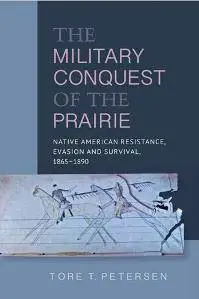The Military Conquest of the Prairie :
Native American Resistance, Evasion and Survival, 1865-1890
by Tore Petersen
English | 2016 | ISBN: 1845198018 | 198 Pages | PDF | 7.22 MB
Native American Resistance, Evasion and Survival, 1865-1890
by Tore Petersen
English | 2016 | ISBN: 1845198018 | 198 Pages | PDF | 7.22 MB
The Military Conquest of the Prairie is a study on the final wars on the prairie from the Native American perspective. When the reservation system took hold about one-third of tribes stayed permanently there, one-third during the harsh winter months, and the last third remained on what the government termed unceded territory, which Native Americans had the right to occupy by treaty. For the Federal government it was completely unacceptable that some Indians refused to submit to its authority. Both the Red River war (1874-75) in the south and the great Sioux war (1876-77 ) in the north were the direct result of Federal violation of treaties and agreements. At issue was the one-sided violence against free roaming tribes that were trying to maintain their old way of life, at the heart of which was avoidance on intermingling with white men. Contrary to the expectations of the government, and indeed to most historical accounts, the Native Americans were winning on the battlefields with clear conceptions of strategy and tactics. They only laid down their arms when their reservation was secured on their homeland, thus providing their preferred living space and enabling them to continue their way of life in security. But white man perfidy and governmental double-cross were the order of the day. The Federal government found it intolerable that what it termed ‘savages’ should be able to determine their own future. Vicious attacks were initiated in order to stamp out tribalism, resulting in driving the US aboriginal population almost to extinction. Analysis of these events is discussed in light of the passing of the Dawes Act in 1887 that provided for breaking up the reservations to the Indian Reorganization Act of 1934 that gave a semblance of justice to Native Americans.



